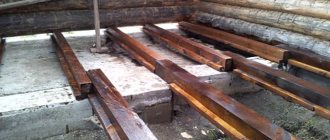What types of axes are there?
This tool will help you perform various types of work. But specialization in one area makes it of little use in another matter. One is good at carpentry, while the other is better at chopping wood. These axes will have differences in the length of the axe, the shape of the head, and the sharpening.
Lumberjack
This ax makes it easier to fell trees and easily cuts branches. Requires a large inertia of the slashing blow. This effect is achieved due to:
- long axe;
- heavy head;
- sharp sharpening;
- shifting the center of gravity to the blade.
All this together saves the effort of the person who works with the tool.
Lumberjack's axe.
Cleaver
Sharpening is not important to him. It splits the log using mass and inertia. A heavy butt adds efficiency to the strike. The long handle allows you to grasp the tool with both hands and make a strong swing. The cleaver has a blunt blade, with a large convergence angle and a shift in the center of gravity towards the blade. This shape allows the log to be torn apart with sufficient swing.
Cleaver ax.
Plotnitsky
This tool is used for trimming logs; it is used instead of a plane. Most often held with one hand. They do not need to chop wood, so a strong swing and great inertia are not required. But what is important is a sharply sharpened blade and a smooth blade that smoothly transitions into it.
Carpenter's axe.
Srednerus
A universal ax suitable for many types of work. It does not have a clear specialization, therefore it combines the features of several types. It is also called taiga.
On a hike, you need to chop firewood, make tent pegs, cut up the hunter's kill, trim it, and use it as a lever. It is important not to carry too much weight. All of the above are features of this ax. It is small in size, sharply sharpened, has a moderately wide blade and a small strong axe.
Taiga axe.
Combat
This is already in the category of cold steel. If you decide to do it yourself, then this weapon will need to be taken for examination and subsequent registration. These include axes, Viking axes, tomahawks, celts and others.
Battle axe.
Sturdy
Hiking handy tool. The short handle and lightweight head make it lightweight. It has a wide, sharply sharpened blade. For farming, such a hatchet is useless, but on a hike it will come in handy.
The camping ax is sturdy.
Choosing wood for an ax
When choosing the best wooden material for an ax handle, you need to focus on the individual preferences of the master and the type of future work. The standard ax handle is made of hardwood. The material must be well dried, otherwise loosening of the ax head cannot be avoided. This will occur as moisture is lost due to changes in temperature indoors or outdoors (damp forest, hot summer).
Below is a list of the most common species, and from which wood it is better to make an ax handle the person himself should decide, focusing on his wallet and experience.
Maple breed
The Canadian maple ax handle has a beautiful appearance, is well polished and dries well. The texture is hard, durable and elastic. Maple handles have long established themselves well among carpenters and are considered an excellent material for ax handles.
Jatoba tree
Jatoba wood has increased impact resistance and is considered ideal for the production of ax handles or forged knives. The wood is hard, tough, and superior in strength to oak. Excellent processing, good appearance. Jatoba is suitable for those craftsmen who need not only functionality, but also excellent appearance. This is the most expensive and beautiful breed for an ax handler.
hickory tree
Widely used in the manufacture of handles for axes, knives and hammers. The wood is elastic, dries well and is durable. Distributed in Canada and North America, in our latitudes it is less popular due to the high cost of materials.
Oak and beech trees
Both breeds are easy to handle, affordable and common. Unfortunately, every tree has its downsides. The oak ax handle is too hard and heavy, and when chopping it dries out the hand of the master. You can absorb the force of friction on your hands by increasing the length of the oak handle. Beech, on the contrary, has a porous structure and easily absorbs moisture. Double impregnation with oil is necessary to reduce the level of hygroscopicity. Beech wood has a smooth and beautiful surface and cuts well.
Birch
If a person wants to make a high-quality ax handle with his own hands, then birch wood is ideal for this. The only and main disadvantage of this breed is the long drying time. The shortest period is 1 year, but there are cases when the time extends to 2 years. The peculiarity of birch is its hygroscopicity, but at the same time it is easy to cut out patterns from a workpiece. A wide range of growth and low cost of material make birch the most popular wood for homemade handles.
Components of an ax
The ax consists of 2 main parts. Each of them is important and performs its own functions. The type of ax and whether it will be suitable for work depends on their combination.
Complete diagram of the axe.
Metal head
The head has several parts. The butt and the canvas are separated. The blade has a blade, cheeks and an eye. In some types of axes, the butt can be massive. It will give additional inertia to the tool. The length and thickness of the blade, blade width, vanishing angle, sharpening, each type has its own parameters.
Ax head.
Toporische
Much depends on its length and strength. The axe, cleaver and lumberjack are made with a long axe. Carpenter's and universal types like a handle of medium length. And for a tourist or chopping kitchen hatchet, a short ax is enough. But each ax must be made of hard wood that absorbs vibration well and fits comfortably in the hand.
Ax handle.
How to protect against rotting?
The wood from which the ax handle is made, like other similar materials, is susceptible to rotting. Such problems always arise over time or in inappropriate storage conditions for the tool.
It is important to take care of your homemade ax in advance, protecting it from rotting. It is strongly not recommended to use compositions such as varnishes or paints to protect wooden handles
The ban on the use of such compounds is due to the fact that their presence on the handle can lead to it slipping out of the hands during certain work. The reason for this is the glossy smooth texture.
The optimal solution for protecting the ax from rotting would be other suitable impregnations. You can coat the handle with linseed oil or good old linseed oil. There are other highly effective antiseptic agents that will extend the life of natural wood. But we must take into account that they will need to be applied periodically. Don't forget this procedure.
Beautiful do-it-yourself ax from a simple ax
It is important to understand what type of ax you need to make. Because not every option will come out of the head of an ordinary ax. They can have different masses and shapes. Usually they undertake to make a sturdy, middle-class or carpenter's one.
Ax handle
The handle, first of all, should be comfortable and strong. It will be good if the ax handle does not dry out, because this affects the tightness of the head. Will make her beautiful:
- correctly selected block, with a beautiful pattern;
- unusual shape;
- impregnation of the desired color;
- ferric chloride solution;
- pattern burned into wood.
You can come up with many options, it is important that they are technically feasible and leave the handle strong and comfortable.
Beautiful ax handle.
Braid for ax handle
It is made to strengthen the ax handle and protect it from destruction upon impact. Also, when doing carpentry, gripping your hand near your head will be more convenient.
Paracord is used for this. This cord is wound around the ax handle in its upper part up to the head. The winding is done tightly so that the paracord does not slip.
An ax covered in leather.
cloth
In the “Photoideas” section there are interesting options for the shape of the head canvas. Most ideas can be done without a lot of time and special equipment. If you take up forging, then any option is possible. What is important here is only an understanding of the scope of application of the ax and compliance with the requirements for this type. After choosing the type of canvas, you will need:
- make a sketch or life-size drawing;
- transfer the sketch to the workpiece;
- cut out the desired contour with a small gap;
- process initially with a grinder, machine or file;
- bring the workpiece to the desired form;
- shape the blade and sharpen it;
- if necessary, anneal, harden and temper.
- final grinding and sharpening of the tool;
- drawing the design and etching it completes the process.
There is nothing complicated, but it will require a little skill and ability to work with a tool.
The ax head can be decorated.
Making a storage case
The case is made for storing and safely carrying the instrument. He can:
- hold the entire axe;
- just cover your head;
- cover only the blade.
The sheath material protects the blade and, in some cases, the entire tool. Suitable for making genuine leather, plastic, thick fabric such as tarpaulin.
Making a case with your own hands will not be a problem, just follow a simple algorithm step by step:
- the tool is placed on cardboard or fabric;
- contours are applied to the material;
- a pattern is cut out and a mock-up of the cover is pre-assembled;
- after fitting, if necessary, correction is made;
- the pattern is transferred to the selected material;
- the cover is assembled or sewn.
Belt case for an axe.
Tools and materials
Creating a Viking ax is not an easy process, but it is possible for all people who have the desire to make it themselves. This activity turns an ordinary gift into a unique gift, and the time spent will be remembered with warmth. A well-designed ax will not only be bright, but also help in business with its functionality.
An ordinary ax can easily be taken as the basis for creating a Viking axe. Even an unnecessary and rusty copy is allowed. The work comes down to restoration and artistic decoration.
In addition to the blanks themselves (metal part and lumber for the handle), you will need:
- an ordinary grinder with cutting and flap wheels for metal;
- sandpaper - in the spectrum of roughness values (from rough to zero);
- varnish brush;
- knife – strong enough for woodworking;
- welding machine;
- drill or small electric drill with small diameter drills.
The equipment you will need are clamps and a bench vice (to secure parts during processing). To complete the artistic part the following will be useful:
- ordinary and masking tape;
- stationery knife;
- pencil or pen, marker;
- wood varnish (or linseed oil).
At the same time, you will need leather, scissors, an awl, needles and threads.
DIY Viking axe.
Photo ideas
The head and its handle may have an original appearance. A drawing is made on the head and the shape of the canvas is changed. If the ax handle is aged, burned or treated with colored impregnation, the overall appearance of the product will change greatly.
Stone processing
In the first samples of a stone ax, the thickness of the working part did not allow cutting the material, since it was blunt and could only thresh, crush or break. In this regard, ancient people learned to process stone by sharpening one edge. To do this, elongated thin plates with a sharp edge were beaten off granite with systematic blows. Later, stone anvils were used to make an ax, which were struck repeatedly with the tool, achieving the required sharpness of the blade. Archaeologists have found tools with chips at an angle of up to 900.











